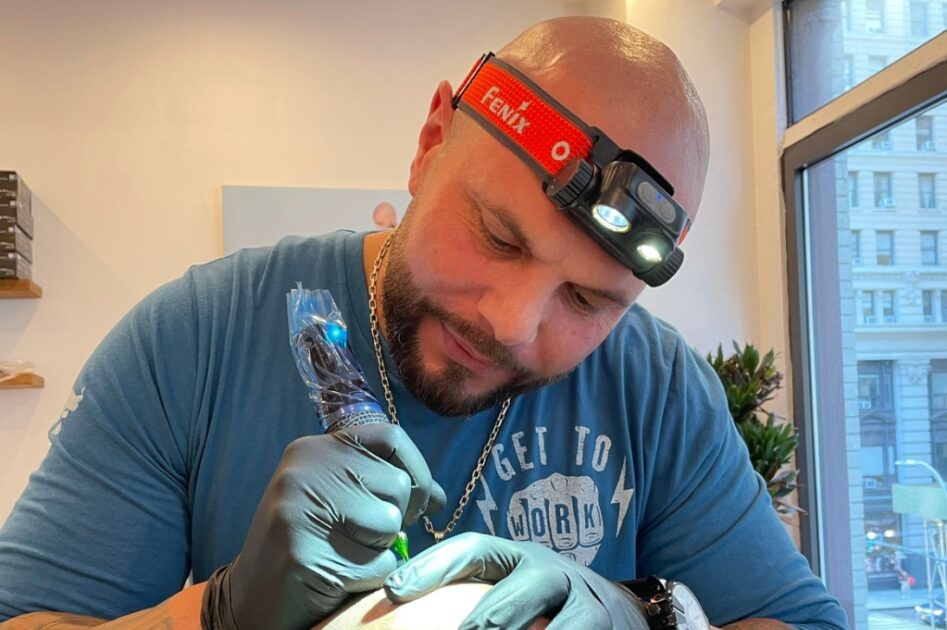Alopecia: Tips for Treating Hair Loss and Scarring

Alopecia is a medical condition characterized by hair loss on the scalp and other areas of the body. Some types of alopecia cause scarring and permanent hair loss due to follicle destruction. A hair tattoo disguises bald spots and scars by placing small amounts of pigment on the scalp that mimic the appearance of hair follicles. Here is more information about alopecia and some tips for treating the condition:
Understanding Alopecia
There are many types of alopecia, including alopecia areata, androgenetic alopecia, and cicatricial alopecia. The most common kinds of alopecia are non-scarring and scarring. Types of non-scarring alopecia include telogen effluvium, alopecia areata, and androgenetic alopecia. Hair loss caused by non-scarring conditions is potentially reversible because there is no permanent damage to the hair follicles. Scarring alopecia conditions, such as cicatricial alopecia, cause scarring on the scalp and permanent hair loss. These conditions can be caused by inflammatory or autoimmune disorders. They may also be triggered by skin injuries, medical treatments, or burns.
The most common treatment for scarring alopecia is anti-inflammatory medications. If the alopecia is caused by a bacterial infection, you will likely be prescribed an antibiotic such as minocycline or doxycycline. You must take this medication as directed for 6-12 months before the hair loss begins to slow or stop. Once the scarring has healed fully, you can start exploring hair loss treatments like scalp micropigmentation.
Treatments for Alopecia-Related Hair Loss
Traditional hair loss treatments like hair transplants are not recommended for people with scarring alopecia. The scar tissue can prevent the transferred hair from growing. A hair tattoo is an effective alternative treatment for camouflaging bald spots or thinning hair and adding density to your hair. Hair tattoos do not encourage hair regrowth but instead create the illusion of hair follicles in bald or thinning areas. Unlike hair transplants, a hair tattoo is non-invasive, and recovery time is minimal. Micropigmentation artists can tattoo over your scars and blend them into your existing hair to make them less noticeable.
Hair tattoos require less maintenance than hair transplants or other hair loss solutions, such as wearing a wig or applying topical medications. We recommend avoiding strenuous exercise and scrubbing the treatment site for five days immediately following treatment. After that period, you can resume your regular activities with no downtime. The long-lasting results of micropigmentation treatments can be maximized by keeping the area moisturized and avoiding excessive sun exposure.
Treating Hair Loss and Scarring With Micropigmentation
A hair tattoo allows you to enhance hair follicle density on your scalp, camouflage your scars, and customize your results. It’s suitable for clients with any type of alopecia. If you are interested in micropigmentation, follow these tips to treat your hair loss and scarring:
Book a Free Consultation
During your free consultation with Scalp Micro USA, a practitioner will discuss the scalp micropigmentation process with you in depth. They will ask about your hair goals and create a customized tattoo design that suits your natural hairline, the extent of your scarring, and your desired hair density. After examining the color of your natural hair, they will color-match the pigment to help it blend well with your existing hair follicles.
Attend Multiple Sessions
Once your artist has developed a customized treatment plan, they will schedule your micropigmentation sessions. The treatment requires 2-3 sessions lasting between 2-4 hours each to achieve optimal results. Scheduling appointments about 10-20 apart gives your skin time to heal properly. It also allows your practitioner to adjust and refine your tattoo design to create lasting, natural-looking results while prioritizing your skin’s health and healing process.
Follow Aftercare Suggestions
Carefully following your artist’s recommendations after treatment can help your tattoo maintain its appearance while it heals. For the first five days after treatment, we recommend that you avoid shampooing, shaving, and scratching the treated area. We also recommend staying out of direct sunlight for 21 days to prevent sunburn and irritation. Stay out of chlorinated pools for a month to help your skin retain its natural moisture and promote healing. Following these aftercare suggestions can help prevent premature pigment fading. Micropigmentation results should last between 4-6 years. If you notice fading after this point, we will schedule a follow-up appointment to restore the pigment.
Camouflage Hair Loss and Scarring With a Hair Tattoo
Alopecia can cause permanent hair loss, scarring, and noticeable bald spots on the scalp for men and women of all ages. Individuals with alopecia caused by genetics or environmental factors are good candidates for micropigmentation. This treatment can be performed on clients with long and short hair to camouflage alopecia symptoms. This customizable treatment is highly effective, non-invasive, low maintenance, and ideal for all skin tones. Book a free consultation with an artist at a Scalp Micro USA clinic location in Fort Lauderdale, Houston, Chicago, New York City, or Los Angeles.

Tired of hair loss?
Get the perfect hairline, 100% guaranteed, with our scalp
micropigmentation treatment that is customized just for you. No more
crazy combovers. No more ineffective medications. Just results.